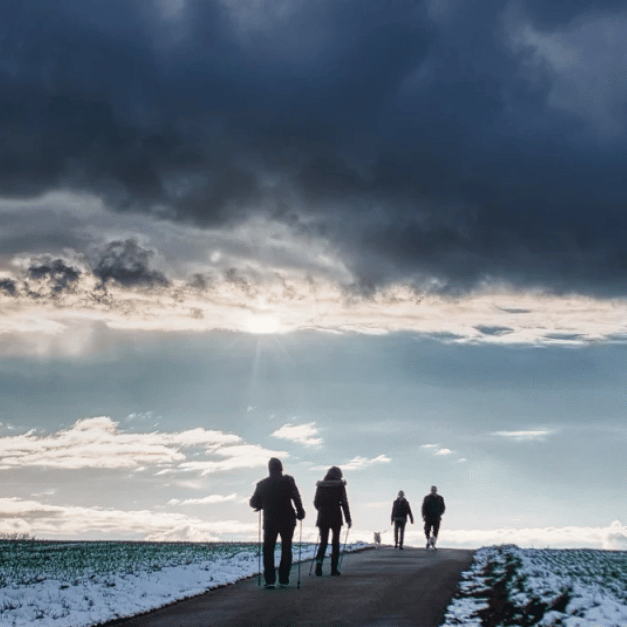A poem by Hayden Carruth
Tag Archives: contemplation
Lenten Day Thirty-six: Jesus of Nazareth
The importance of perseverance when we stumble on our path.
Lenten Day Thirty-five: Henri Nouwen
On this Monday of Holy Week, suffering is an appropriate theme as we move toward the cross of Good Friday.
Lenten Sabbath Five: Palm Sunday
He has walked his entire life to fulfill his ministry, and now his last steps will take him to the cross. But not yet. First, we wave our palm branches and shout “Hosanna!”.
Lenten Sabbath Four
March 10, 2024 Taking a break from Lenten meditations on this “mini-Resurrection” day as we await Easter Sunday, let’s breathe in Sabbath together. Blessings ~ Rosemary Wood Walking The end of January, the weight of pandemic and politics as heavyas blizzard snow, I take to the woods,down an empty pathmade by sojourners before me.The sky,Continue reading “Lenten Sabbath Four”
Lenten Day Twenty: Jesus of Nazareth
March 4, 2024 “Take up your cross and follow me.” Jesus of Nazareth, Matthew 16:24 On this twentieth day of Lent, halfway through the Lenten season, this invitation from Jesus to his followers feels appropriate. I admit, though, that this quotation is not in my collection or stuck on anything anywhere in my house. ItContinue reading “Lenten Day Twenty: Jesus of Nazareth”
Lenten Day Thirteen: Mary Oliver
February 26, 2024 It is a serious thing just to be aliveon this fresh morningin the broken world. ~ Mary Oliver On this thirteen day of Lent, I stop to ponder why these particular lines from Mary Oliver’s poem, “Invitation,” touched me so much that I jotted them down and stuck them on my mirror. Continue reading “Lenten Day Thirteen: Mary Oliver”
Lenten Day Eleven: Dag Hammarskjöld
February 24, 2024 Photo credit: Pixabay “For all that has been, thank you. For all that is to come, yes!” ~ Dag Hammarskjöld On this eleventh day of Lent, I face this quotation once again and feel my resistance to it. I admit that this particular quotation has been on my mirror, off my mirror,Continue reading “Lenten Day Eleven: Dag Hammarskjöld “
Lenten Day Eight: John McQuiston
February 21, 2024 “There must be time within which we neither speak nor listen, but simply are.” John McQuiston, author of Always We Begin Again. On this eight day of Lent, this quotation reminds me of a blog I read just yesterday entitled Lenten Overload, by my friend Nancy Agneberg (https://livingonlifeslabyrinth.com/2024/02/20/lenten-overload/). For those of usContinue reading “Lenten Day Eight: John McQuiston”
A Different Perspective
October 24, 2023 When the entire world seems to be crumbling apart, perhaps what we need to practice is simply a different perspective, a turn of our lens. When we can slow down enough to become observant; when we choose to listen to what beckons; when we pay attention to what has been trying toContinue reading “A Different Perspective”



